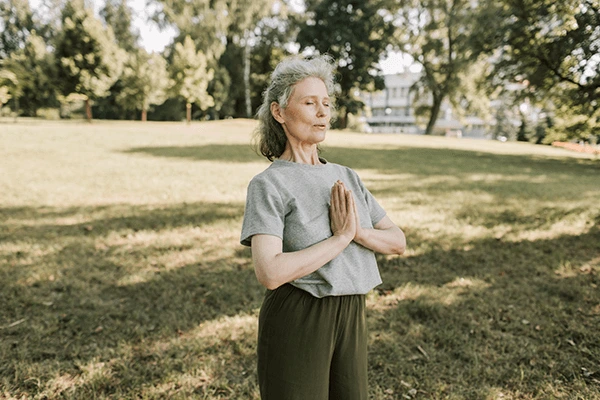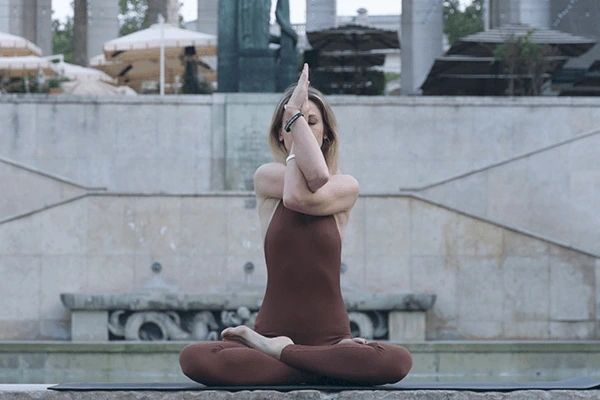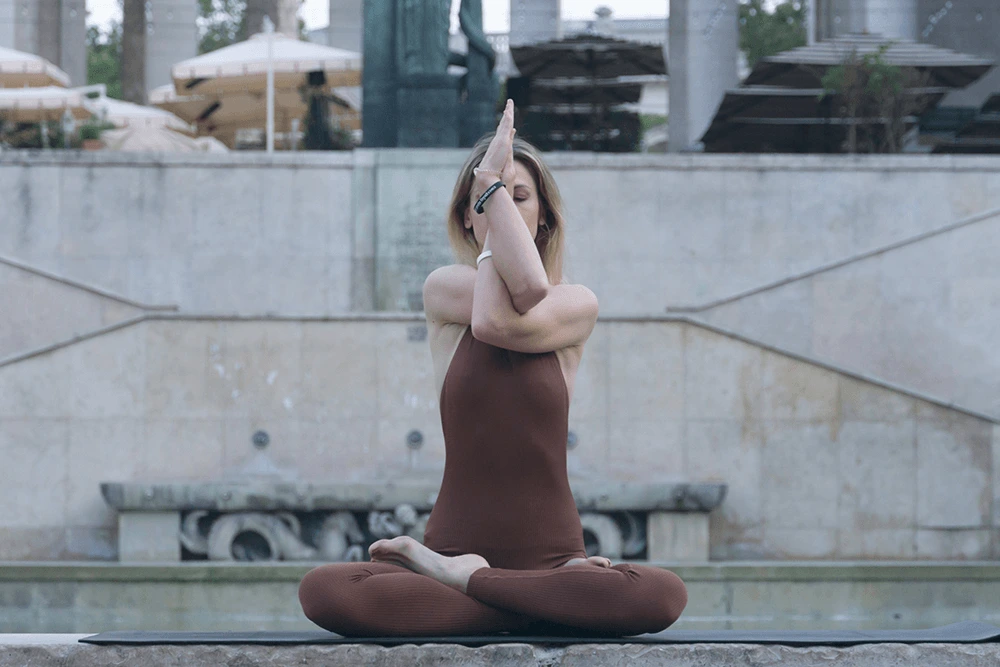Unlock the Benefits of Non-Sleep Deep Rest (NSDR)
Are you seeking a way to enhance your sleep, focus, and overall mental well-being? Enter the world of non-sleep deep rest (NSDR), an innovative relaxation technique that can improve your life in numerous ways. Discover how this practice can help you unlock your brain’s full potential, recharge better, and find inner peace.
Short Summary
- Non-Sleep Deep Rest (NSDR) is a form of relaxation that can help you achieve better sleep.
- It involves guided meditation, yoga nidra or hypnosis and has proven positive effects on mental & physical health.
- Track your progress with wearables to gain insights into the effectiveness of NSDR in improving focus, reducing stress and promoting overall wellbeing.
Understanding Non-Sleep Deep Rest and Deep Relaxation

Non-Sleep Deep Rest (NSDR) is a state of profound relaxation that mimics slow-wave sleep, achieved through various relaxation techniques such as guided meditation, yoga nidra, or hypnosis. This unique form of rest can maximize the brain and body’s performance by initiating restorative processes that make a significant difference in your daily life, including helping you fall asleep more easily.
So, how does NSDR differ from yoga nidra and deep sleep? Yoga nidra, also known as yogic sleep, is a meditation practice that induces deep relaxation similar to NSDR but usually includes intentions and mantras not found in an NSDR video or audio clip. On the other hand, non-sleep deep rest is distinct from sleep, but it can help you achieve a good night’s sleep by promoting relaxation and reducing stress.
To practice NSDR, you need to grasp the intention and the skill involved, often achieved through guided meditation. Listening to a guided meditation is an excellent way for beginners to get started with NSDR, as it allows you to maintain conscious control while experiencing deep relaxation.
The Science Behind NSDR

NSDR, or Non-Sleep Deep Rest, is a state of relaxation that combines mindful breathing and body scanning to help you reach an aware, yet relaxed state. This state can alter your brain wave frequency to mimic that of slow-wave sleep, which is the stage when our body gets a chance to rejuvenate and heal itself. Developed by Dr. Andrew Huberman, a renowned Stanford neuroscientist and researcher, the term NSDR was coined to offer a straightforward version of yoga nidra that would be accessible to everyone.
One of the reasons NSDR has become popular with health and wellness experts is because of its positive effects on both mental and physical health. The Neuro-Soul Deconstruction and Reconstruction process involves two steps. Firstly, a person has to achieve a state of relaxation on their own. Secondly, they move on to a period of intense focus. Two ways to achieve NSDR are through yoga nidra and hypnosis.
Slow-wave sleep, the stage of non-REM sleep when the body rejuvenates itself, is closely related to the mechanisms behind NSDR. By tapping into the restorative benefits of slow-wave sleep, NSDR can support cognitive function, enhance neuroplasticity, and increase dopamine levels, resulting in improved focus, attention, motivation, and mental clarity.
Delving into Yoga Nidra

Yoga nidra, an ancient practice, induces deep relaxation through guided meditation, similar to NSDR. This practice has a long history and is accessible to people of all backgrounds, helping manage sleep issues like chronic insomnia.
To get the most out of your yoga nidra practice, you’ll want to:
- Find a quiet and distraction-free spot.
- Get comfortable.
- Explore various yoga nidra tracks online.
- Guide your awareness through different parts of your body until you reach a state of semi-consciousness.
Hypnosis and NSDR
Hypnosis is another method to achieve NSDR, providing deep relaxation and concentration through a trance-like state. Unlike yoga nidra, hypnosis involves a suppression of consciousness. As a result, you may not remember what happened during the experience.
Therapeutic hypnosis is a beneficial tool used for treating various mental and physical conditions. It can help with:
- Anxiety
- Post-traumatic stress
- Pain
- Certain mood disorders
As with yoga nidra, hypnosis can be guided by a therapist or practiced on your own, making it a versatile and effective means of achieving the deep relaxation and concentration benefits of NSDR.
Enhancing Sleep Quality with NSDR
By slowing down your thoughts, activating your parasympathetic nervous system, and giving you a sense of calm and relaxation, NSDR can help improve your sleep quality. Whether you’re struggling with falling asleep or staying asleep, incorporating NSDR into your daily routine can lead to better sleep and improved overall well-being.
When you practice NSDR, you can experience the following benefits:
- Relaxation during the day, allowing your brain to rest better at night
- Improved memory retention
- Reduced stress
- Enhanced thinking skills
All of these contribute to a good night’s sleep, ensuring better quality sleep.
As a result, embracing NSDR can lead to a more restful night’s sleep, leaving you feeling refreshed, energized, and ready to tackle the day ahead.
Boosting Cognitive Function and Focus
In addition to improving sleep quality, NSDR can also have a positive impact on your cognitive function and focus. By supporting cognitive performance, boosting neuroplasticity, and increasing dopamine levels, NSDR can lead to:
- Better focus
- Improved attention
- Increased motivation
- Enhanced mental sharpness
NSDR can aid learning by rewiring the brain so that a skill or type of learning that used to be difficult becomes second nature. When the brain is in a sleep or sleep-like state, neural activity is repeated faster than normal, which rewires the brain and increases plasticity by about 50 percent.
Incorporating NSDR into your daily routine can have profound effects on your mental performance, helping you stay sharp, focused, and engaged in your work and personal life.
Managing Stress and Activating the Parasympathetic Nervous System
NSDR can be a powerful tool for managing stress and activating the parasympathetic nervous system, which is responsible for promoting relaxation and recovery. By reducing stress hormones and providing a sense of calm and relaxation, NSDR can help alleviate feelings of anxiety, tension, and overwhelm.
In today’s fast-paced world, it’s essential to find ways to manage stress effectively. By incorporating NSDR into your daily routine, you can foster a greater sense of well-being and balance, allowing you to navigate life’s challenges with grace and resilience.
As a result, practicing NSDR regularly can contribute to a healthier, more relaxed state of mind, better equipping you to handle stress and maintain a balanced lifestyle.
Tips for Practicing NSDR
If you’re interested in practicing NSDR, there are several tips to help you get started. First, find a comfortable space to practice, free from distractions. This could be a quiet room in your home or even a peaceful spot outdoors.
Next, experiment with different guided meditations or try a self-hypnosis app to find the approach that works best for you. As you become more comfortable with the practice, consider incorporating NSDR into your daily routine, even if it’s just for a few minutes each day.
Lastly, remember that consistency is key. The more you practice, the more adept you’ll become at entering a deep state of relaxation and reaping the numerous benefits of NSDR for your sleep, focus, and overall well-being.
Tracking Your Progress with Wearables
To optimize your NSDR practice and monitor your progress, consider incorporating wearables like WHOOP and Vital into your routine. These devices can help track the impact of NSDR on your sleep, recovery, and overall well-being, allowing you to fine-tune your practice for maximum benefits.
WHOOP users can get minute-by-minute data on stress and heart rate charts, giving them insight into how helpful their recovery activities were. To log a recovery activity with WHOOP, simply use the ‘Start Activity’ feature or ‘Add Activity’ to record that you practiced yoga nidra or another form of NSDR earlier.
By tracking your progress with wearables, you can gain valuable insights into the effectiveness of your NSDR practice, helping you make informed decisions about your well-being and self-care routine.
Summary
In conclusion, Non-Sleep Deep Rest (NSDR) is a powerful technique that can enhance your sleep, focus, and overall mental well-being. By practicing yoga nidra, hypnosis, or other forms of guided meditation, you can tap into the restorative benefits of deep relaxation and transform your daily life.
As you embark on your journey with NSDR, remember to experiment with different approaches, track your progress, and stay consistent with your practice. The rewards of better sleep, improved focus, and reduced stress are well worth the effort.
Frequently Asked Questions
What is a non-sleep deep rest?
Non-sleep deep rest is a form of guided meditation developed by Dr. Andrew Huberman to help you relax and become more aware. It combines mindful breathing and body scanning to bring you into a deep, restful state.
This technique can help reduce stress, improve focus, and increase creativity. It can also help you become more aware of your body and its needs, allowing you to become more aware of your body and its needs.
Does non-sleep deep rest work?
Non-sleep deep rest has been found to be beneficial as it increases dopamine in the nigrostriatal pathway, which is associated with increased creativity.
So, it appears that non-sleep deep rest can work.
What does Huberman recommend for non-sleep deep rest?
Dr. Andrew Huberman recommends achieving non-sleep deep rest states of calm through mental focus practices like yoga nidra and self-hypnosis protocols. These practices can help improve learning, relax, reduce stress and fall asleep more easily.
How long does non-sleep deep rest take?
Non-sleep deep rest typically takes around 20-30 minutes, enabling you to activate the parasympathetic nervous system and accelerate plasticity by up to 50%, allowing you to learn faster and retain information better.
This type of rest is a great way to improve your cognitive performance and increase your productivity. It can help you focus better, think more clearly, and make better decisions. It can also help reduce stress and improve your overall wellbeing.
How does NSDR improve sleep quality?
NSDR can help you get a better night’s sleep by slowing down your thoughts, calming your nervous system, and creating a sense of relaxation – all to get you ready for a good night’s sleep.
NSDR works by slowing down your thoughts, calming your nervous system, and creating a sense of relaxation. This helps you relax and get ready for a good night’s sleep.
NSDR is a simple and effective way to get a better night’s sleep. It can help.
About the PatchMD Sleep Patch
Our Sleep Starter Topical Patch contains sleep aids like melatonin, 5-htp, valerian root and magnesium.
Our patches are also suitable for people with many different forms of allergies. They’re free from gluten, wheat, casein, milk, egg, tree nuts, peanuts, shellfish, soy, and corn. They don’t contain any GMOs, MSG, fillers, artificial dyes, colors, flavorings, or preservatives. So, you can be confident that you’re only receiving the nutrients you need and nothing else.
Each pack contains a 30-day supply of patches. Order a pack today and experience the benefits for yourself.









Leave A Comment
You must be logged in to post a comment.